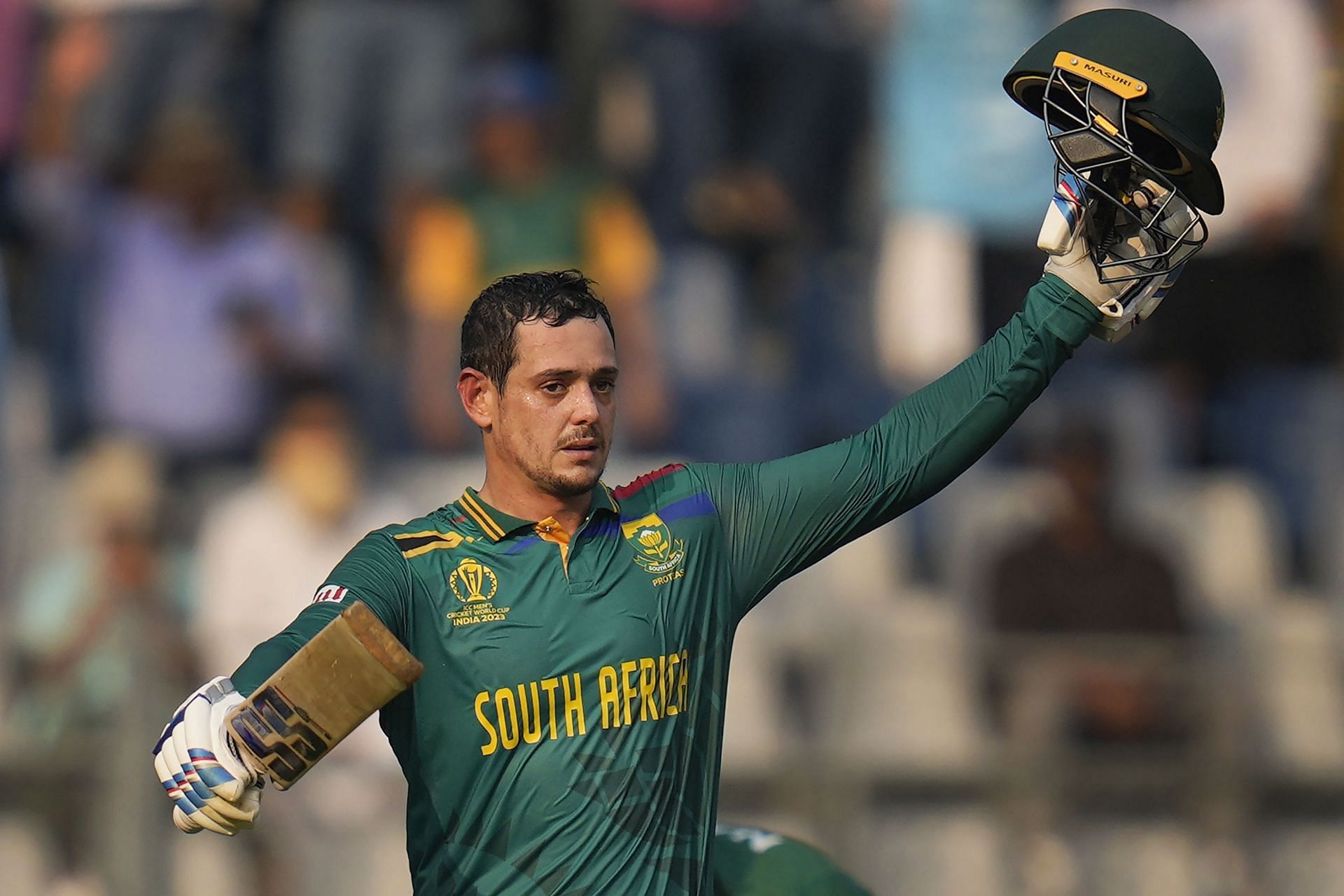
Quinton de Kock and a last dance for the ages
Quinton de Kock is proper box-office, irrespective of which format he plays, and irrespective of which team he turns out for. Thus, when he announced a few months ago that he would be giving up the ODI format altogether, it left a gaping hole – a hole in the South African team (of course) but also a void that fans would not be able to fill very easily, for he remains so different to so many others who play the game.
The final stretch of any sportsperson’s career is tricky, especially if they have announced when their last game might be. Some might get too caught up in the occasion, and might not really enjoy the final phase of what has been a glorious career. Some might actually relish it, let their hair down, not worry about what the future holds, and just enjoy themselves.
Of course, de Kock has not reached that stage yet where he is completely bidding adieu to the game. But having been a part of the South African side for so many years, and having been touted to end their World Cup hoodoo at different stages, this World Cup certainly felt like a crescendo of sorts.
Rather than getting consumed by it, de Kock has come out swinging, and he has already put on a spectacle like no other. A bit of the praise might seem flamboyant to some, and social media critics will be waiting to argue that de Kock’s mettle will only be tested as we go deeper into the tournament.
But logically, pragmatically, and realistically, this is a time to just enjoy his brand of batting. Not least because of how easy he makes things look, but because de Kock himself seems to be enjoying this unique adventure.
Five games in, the wicketkeeper-batter has three hundreds to his name, with each of those in different conditions and each of those against different attacks, but all of them similar in how languidly they were crafted.
Quinton de Kock has already scored three hundreds at this World Cup
It all began against Sri Lanka as South Africa, riding on de Kock’s blistering start, plundered the highest-ever team total at the ODI World Cup. He then followed it up with a more measured but equally effective hundred against Australia, allowing the Proteas to post an above-par total and thump the five-time winners.
His magnum opus so far, though, has to be his knock at the Wankhede Stadium against Bangladesh. Of course, Bangladesh do not have as many bowling weapons as, say, Australia or India but the manner in which he took them down was a sight to behold.
Because South Africa lost wickets early, he had to buckle down a touch. But then, he started opening up his shoulders in the middle overs – something that has been a criticism against him in the past. In Mumbai, he just looked in the zone, ready for whatever Bangladesh threw at him, and ready to add yet another chapter to his storied career.
Apart from the sheer brilliance of these knocks, what has been impressive is how de Kock has set games up for his side. South Africa, coming into the tournament, were being cast as semi-final contenders. The Proteas, however, have been privy to several false dawns, and that is why de Kock’s consistency is important. It is probably also what has set them apart this World Cup, and has made even the most pessimistic of their fans believe that something special could be about to unfold.
It also ties into how de Kock’s World Cup career has promised so much, without really delivering the output his talent has warranted. There would be days, mostly in between World Cups when de Kock and South Africa would seem the best on the planet, only for it to unravel rather unceremoniously in World Cups.
The blot on de Kock’s otherwise stellar ODI career and South Africa’s incredible history was that enough had not been accomplished in the competition that really mattered.
This time, it feels different, and a lot of it is down to their talisman at the top of the order owning the stage like he was always destined to.
Five games in, he has achieved more than he did across his previous two World Cup appearances (both in terms of runs and hundreds scored), and he has done so while looking in complete control, which for a batter who is striking at almost 115, is quite revealing in itself. It has, unsurprisingly, rubbed off positively on South Africa.
That this is going to be his last ODI assignment for the Proteas makes it even more special. Unless he changes his mind, of course. But seeing de Kock over the years, you can almost sense that he has made peace with the fact that these could be the final few ODIs of his career, and at the cost of sounding cliched, he has tried to sign off with a bang.
This is his last dance. The last hurrah. The last time he turns out for South Africa in this format. And for being one of their greatest white-ball openers, he perhaps deserved a shot at history, one final time. He has gotten it. And he has fashioned it by sheer strength of runs – runs that he has scored, almost every time he has walked out to bat.
That is why this is the last dance for the ages. It could end in familiar heartbreak for South Africa. Or it could be forever etched in cricketing folklore. Whichever way it tilts, though, you do not want to take your eyes off it.
A proper climax. For a proper box-office cricketer.